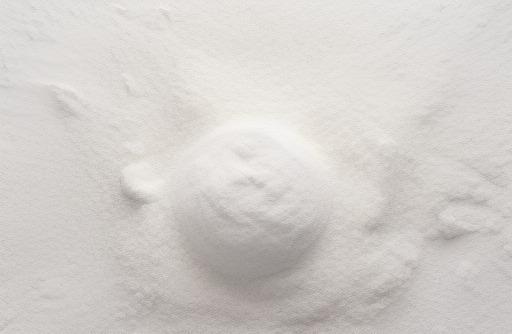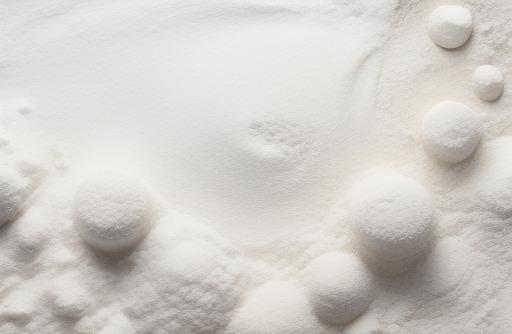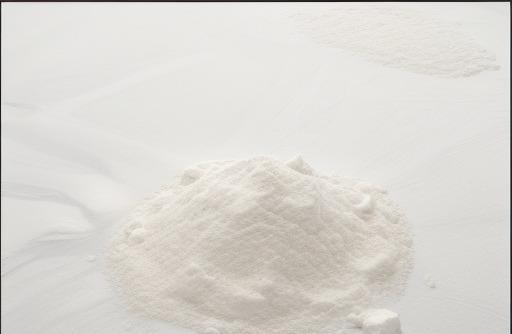- You are here:
- Home »
- Food Substitutes
- » Best Substitutes For Flour
Best Substitutes For Flour

Flour is a staple ingredient in many recipes, including bread, cakes, pastries, and cookies. However, there are several reasons why you may need to find a substitute for flour. Whether you have a gluten intolerance, want to reduce your carbohydrate intake, or simply ran out of flour, there are plenty of alternatives available to ensure you can still create delicious and satisfying dishes.
Key Takeaways
- There are various substitutes for flour that can be used in baking and cooking.
- The best substitute for flour depends on the recipe and dietary restrictions.
- Some popular flour substitutes include almond flour, coconut flour, oat flour, and tapioca flour.
- It is essential to consider the taste, texture, and nutritional profile of the substitute when choosing the right one for your needs.
Why You Need A Substitute For Flour
There are several reasons why you might need to find a substitute for flour:
- Gluten Intolerance: For individuals with celiac disease or gluten sensitivity, consuming flour made from wheat can cause digestive issues, inflammation, and other health problems. In such cases, gluten-free alternatives are necessary.
- Low-Carb or Keto Diets: Some people follow low-carb or ketogenic diets, which restrict carbohydrate intake. Traditional flour is high in carbs, making it unsuitable for these diets. Low-carb substitutes can help meet dietary restrictions.
- Allergies and Sensitivities: Some individuals have allergies or sensitivities to grains, such as wheat, corn, or rice. They need alternative flours that are free from these allergens.
- Limited Access or Availability: In some cases, finding flour may be challenging due to limited access or simply running out of it. Having alternative options allows you to continue cooking and baking.
Types Of Substitutes For Flour

Several types of flour substitutes are available, with varying taste, texture, and nutritional profiles. Here are some of the most common alternatives:
- Almond Flour: Almond flour is made from finely ground almonds. It has a mild, nutty flavor and a slightly grainy texture. Almond flour is gluten-free and low in carbohydrates, making it an excellent substitute for traditional flour in many recipes.
- Coconut Flour: Coconut flour is derived from dried coconut meat. It has a subtly sweet taste and a powdery texture. Coconut flour is high in fiber and low in carbohydrates, making it suitable for gluten-free and low-carb diets.
- Oat Flour: Oat flour is made by grinding oats into a fine powder. It has a slightly sweet and nutty flavor. Oat flour contains gluten, but it can still be suitable for individuals with gluten sensitivities, as long as it is certified gluten-free.
- Tapioca Flour: Tapioca flour, also known as tapioca starch, is made from the starchy tuberous root of the cassava plant. It has a neutral taste and a smooth texture. Tapioca flour is gluten-free and can be used as a thickening agent in addition to being a flour substitute.
Other flour substitutes include rice flour, potato flour, chickpea flour, and buckwheat flour. Each of these alternatives has its own unique characteristics and is best suited for specific recipes or dietary needs.
Best Substitutes For Flour

Choosing the right substitute for flour depends on various factors such as taste, texture, dietary restrictions, and the intended outcome of the recipe. Here are some of the best substitutes for flour:
- Almond Flour: Almond flour is a popular choice for gluten-free baking. It provides a light and moist texture to baked goods. It works well in recipes for pancakes, muffins, cookies, and cakes. Almond flour is also nutrient-dense, containing protein, healthy fats, and fiber.
- Coconut Flour: Coconut flour is an excellent alternative for individuals following a low-carb or ketogenic diet. It absorbs large amounts of liquid, so recipes may require adjustments. Coconut flour works well in recipes for bread, cookies, and muffins. It adds a subtle coconut flavor to the dishes.
- Oat Flour: Oat flour is a good option for those who want a gluten-free alternative but still enjoy the taste of traditional flour. It is commonly used in recipes for pancakes, muffins, cookies, and bread. Oat flour adds a nutty flavor and a slightly denser texture to baked goods.
- Tapioca Flour: Tapioca flour is an excellent thickening agent and can be used as a substitute for flour in recipes that require a lighter texture. It works well in recipes for puddings, sauces, and soups. However, tapioca flour alone may not provide enough structure for baked goods and is usually used in combination with other flours.
Choosing The Right Substitute For Flour

When choosing a substitute for flour, it is essential to consider the recipe’s requirements and your dietary restrictions. Here are a few factors to consider:
- Taste: Each substitute has its own distinct taste, which can influence the final flavor of the dish. Consider whether the flavor of the substitute will complement or overpower other ingredients in the recipe.
- Texture: Different substitutes have varying textures, which can affect the consistency of the final product. Consider whether the recipe requires a light and airy texture or a denser and more substantial texture.
- Nutritional Profile: Take into account the nutritional content of the substitute. Some alternatives, like almond flour, are higher in healthy fats and protein, while others, like coconut flour, are high in fiber. Choose a substitute that aligns with your dietary needs and goals.
- Recipe Compatibility: Certain substitutes work better in specific recipes. For example, almond or coconut flour may produce better results in baked goods, while tapioca flour may excel in thickening sauces or soups.
By considering these factors, you can choose the right substitute for flour that will yield the best flavor and texture for your specific recipe.
Cooking With Substitutes For Flour

Cooking with flour substitutes may require some adjustments to recipes to ensure desirable results. Here are a few tips for cooking with flour substitutes:
- Measurements: Flour substitutes have different absorption rates than traditional flour, so it is crucial to measure the substitute accurately. Follow recipes that specifically call for the substitute or adjust the measurements as needed.
- Texture Adjustments: Flour substitutes can affect the moisture content and texture of the final product. If the batter or dough appears too wet or dry, adjust by adding small amounts of liquid or additional substitute until the desired consistency is achieved.
- Binding Agents: Some flour substitutes may not have the same binding properties as traditional flour. In recipes that require structure, such as bread or cake, consider adding binding agents like eggs or xanthan gum to ensure the desired texture.
- Baking Temperature and Time: Flour substitutes may require different baking temperatures and times compared to traditional flour. Keep an eye on the cooking process and adjust accordingly to prevent over- or under-cooking.
Recipes Using Substitutes For Flour

Here are a few recipe ideas using some of the best substitutes for flour:
Almond Flour Pancakes
Ingredients:
- 2 cups almond flour
- 4 eggs
- 1/2 cup milk (dairy or plant-based)
- 1 tablespoon honey or sweetener of choice
- 1 teaspoon baking powder
- 1/2 teaspoon vanilla extract
- Pinch of salt
Instructions:
- In a large bowl, whisk together the almond flour, baking powder, and salt.
- In a separate bowl, whisk together the eggs, milk, honey, and vanilla extract.
- Pour the wet ingredients into the dry ingredients and stir until well combined.
- Heat a non-stick skillet or griddle over medium heat and lightly grease with oil or butter.
- Pour 1/4 cup of the batter onto the skillet for each pancake.
- Cook until the edges are set and bubbles form on the surface, then flip and cook for another 1-2 minutes.
- Serve the pancakes warm with your favorite toppings.
Coconut Flour Chocolate Chip Cookies
Ingredients:
- 1/2 cup coconut flour
- 1/4 cup coconut oil, melted
- 1/4 cup honey or maple syrup
- 2 eggs
- 1 teaspoon vanilla extract
- 1/4 teaspoon baking soda
- 1/4 teaspoon salt
- 1/2 cup chocolate chips (dairy or plant-based)
Instructions:
- Preheat the oven to 350°F (175°C) and line a baking sheet with parchment paper.
- In a large bowl, whisk together the coconut flour, baking soda, and salt.
- In a separate bowl, whisk together the melted coconut oil, honey or maple syrup, eggs, and vanilla extract.
- Pour the wet ingredients into the dry ingredients and stir until well combined.
- Fold in the chocolate chips.
- Drop rounded tablespoons of dough onto the prepared baking sheet.
- Bake for 10-12 minutes, or until the edges are golden brown.
- Allow the cookies to cool on the baking sheet for a few minutes before transferring them to a wire rack to cool completely.
Tapioca Flour Gravy
Ingredients:
- 2 tablespoons tapioca flour
- 2 tablespoons butter or oil
- 2 cups broth (vegetable, chicken, or beef)
- Salt and pepper to taste
Instructions:
- Heat the butter or oil in a saucepan over medium heat.
- Add the tapioca flour and stir continuously for 1-2 minutes, until lightly golden.
- Slowly whisk in the broth, making sure to whisk out any lumps.
- Bring the mixture to a boil, then reduce the heat and simmer for a few minutes until thickened.
- Season with salt and pepper to taste.
- Serve the gravy hot with your favorite meats, potatoes, or vegetables.
These recipes demonstrate how various flour substitutes can be used to create delicious and satisfying dishes that cater to different dietary needs.
Storage And Shelf Life Of Substitutes
When it comes to storing flour substitutes, it is important to consider their unique characteristics and shelf life:
- Almond Flour: Store almond flour in an airtight container in the refrigerator or freezer to extend its shelf life. It can last for several months in the fridge and up to a year in the freezer.
- Coconut Flour: Coconut flour should be stored in an airtight container in a cool, dry place. It has a longer shelf life compared to other flours and can last for up to a year.
- Oat Flour: Oat flour can be stored in an airtight container in a cool, dry place for several months. To prolong its shelf life, it is recommended to store it in the refrigerator.
- Tapioca Flour: Tapioca flour should be stored in an airtight container in a cool, dry place. It can last for up to a year.
It is crucial to check the packaging or label instructions for specific storage recommendations for each substitute.
Conclusion
Finding a substitute for flour is essential for individuals with dietary restrictions or those who simply want to explore different ingredients in their cooking and baking. From almond flour to tapioca flour, there are numerous alternatives available that can provide similar, if not better, taste and texture. By understanding their unique characteristics and adjusting recipes accordingly, you can continue to enjoy delicious and satisfying dishes without compromising your dietary needs or preferences.
Pro Tip: When substituting flour with almond or coconut flour, it is recommended to use a 1:1 ratio. However, since these flours have different absorption rates, it may be necessary to add slightly more or less liquid to achieve the desired consistency. Start by gradually adding the liquid and adjusting as needed.
FAQS
What Are The Best Flour Substitutes For Gluten-free Baking?
Gluten-free flours such as almond flour, coconut flour, rice flour, potato starch, and tapioca flour are great substitutes for traditional flour in gluten-free baking. Each one brings its unique taste, texture, and nutrient profile to the mix.
What Is The Best Flour Substitute For Those Who Follow A Low-carb Or Keto Diet?
Almond flour and coconut flour are the most popular substitutes for traditional flour in low-carb and keto baking. They are both low in carbs and high in healthy fats, making them perfect for creating low-carb bread, muffins, and cakes.
Can I Use Oats As A Flour Substitute?
Yes, oats can be ground into flour and used as a substitute for traditional flour in baking. However, it is important to note that oats contain gluten-like proteins that can cause reactions in those with celiac disease or gluten intolerance. If you need a gluten-free option, look for certified gluten-free oats.
Are There Any Flour Substitutes That Are Higher In Protein Than Traditional Flour?
Yes, chickpea flour and quinoa flour are both higher in protein than traditional flour and can be used as substitutes in baking. Chickpea flour is also high in fiber and iron, while quinoa flour is a great source of magnesium and other nutrients.
What Is The Best Flour Substitute For Savory Dishes Such As Gravies And Sauces?
Cornstarch, arrowroot, and potato starch are all good flour substitutes for thickening savory sauces and gravies. They are all gluten-free and work well in place of flour to create a smooth and silky texture.
Sources
About the Author Jenny
I'm Jenny, a housewife with an unwavering passion for food. My culinary journey began with my grandmother's kitchen, and it's now a full-fledged food blog. I've turned my love for cooking into a creative outlet, sharing recipes and stories with a global community of fellow food enthusiasts. It's proof that being a housewife can also mean pursuing your passions and savoring life's delectable moments.
